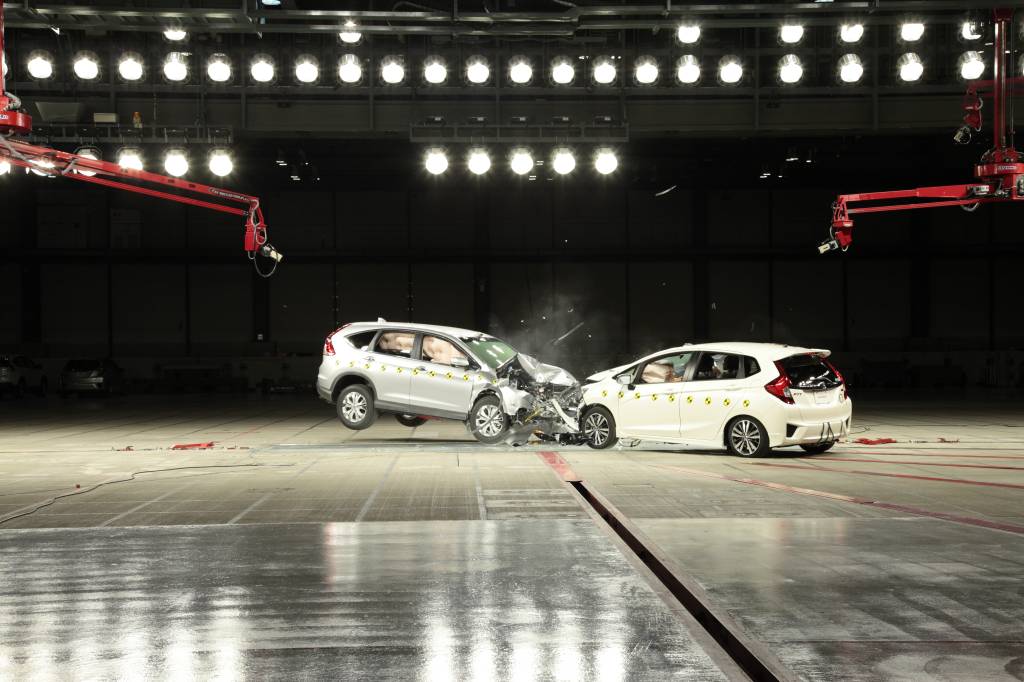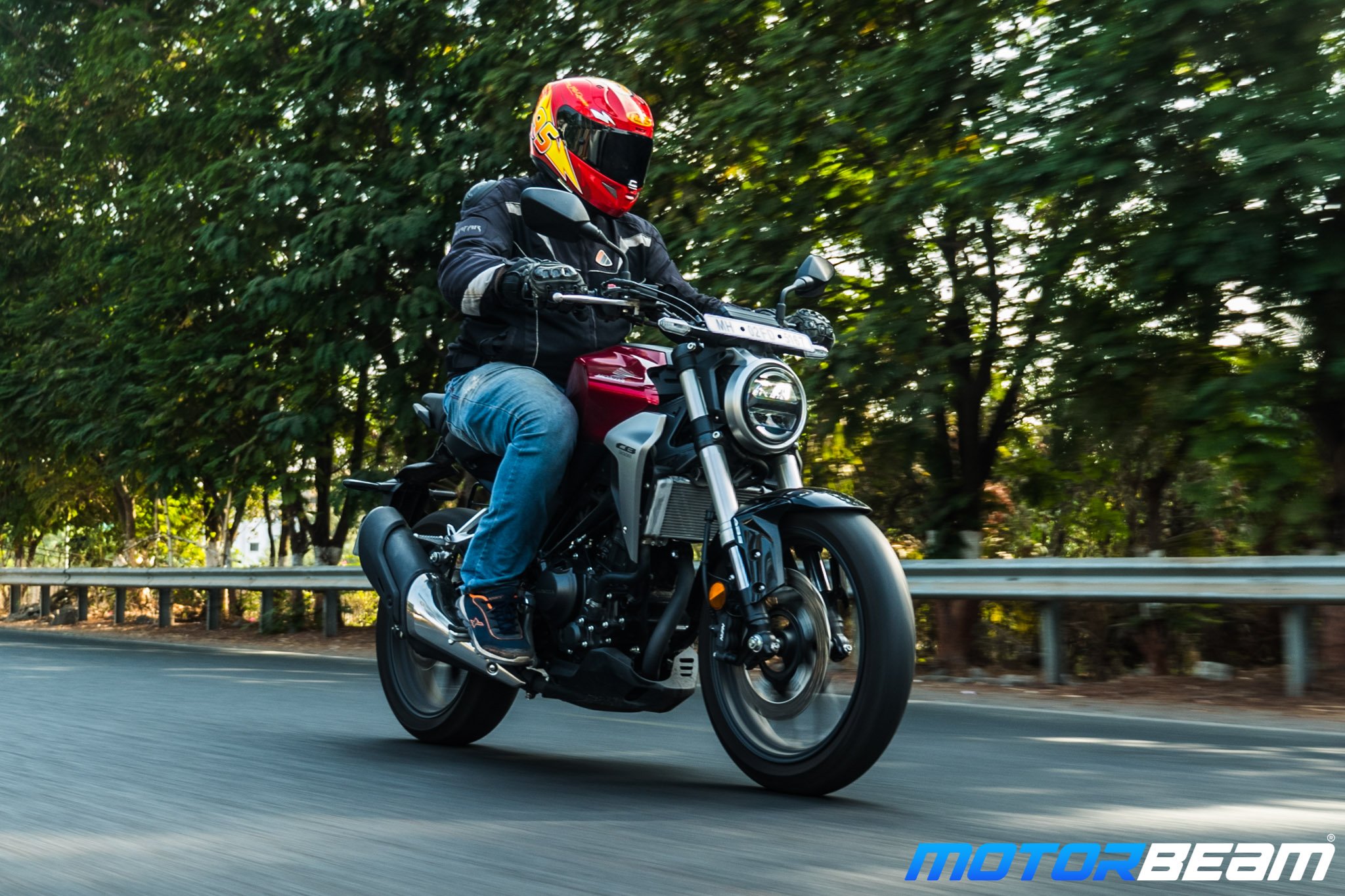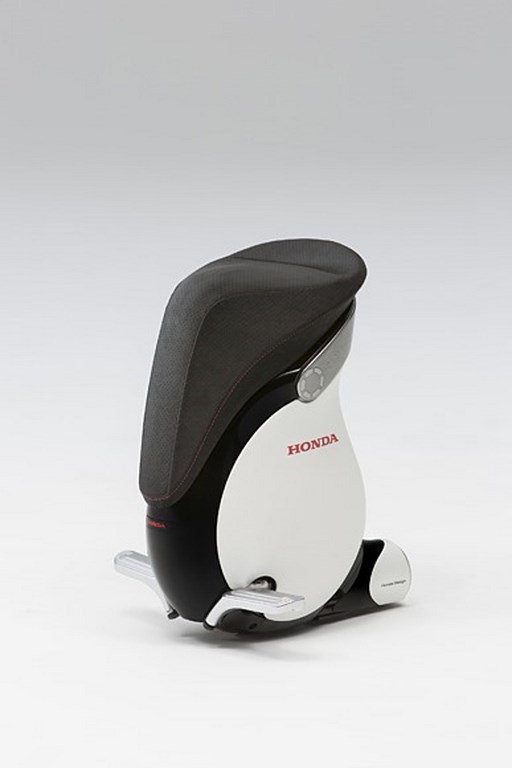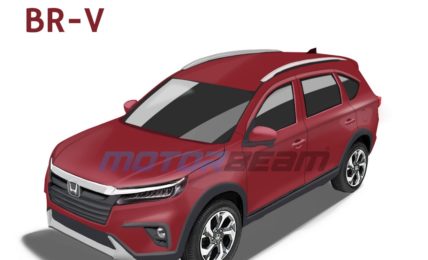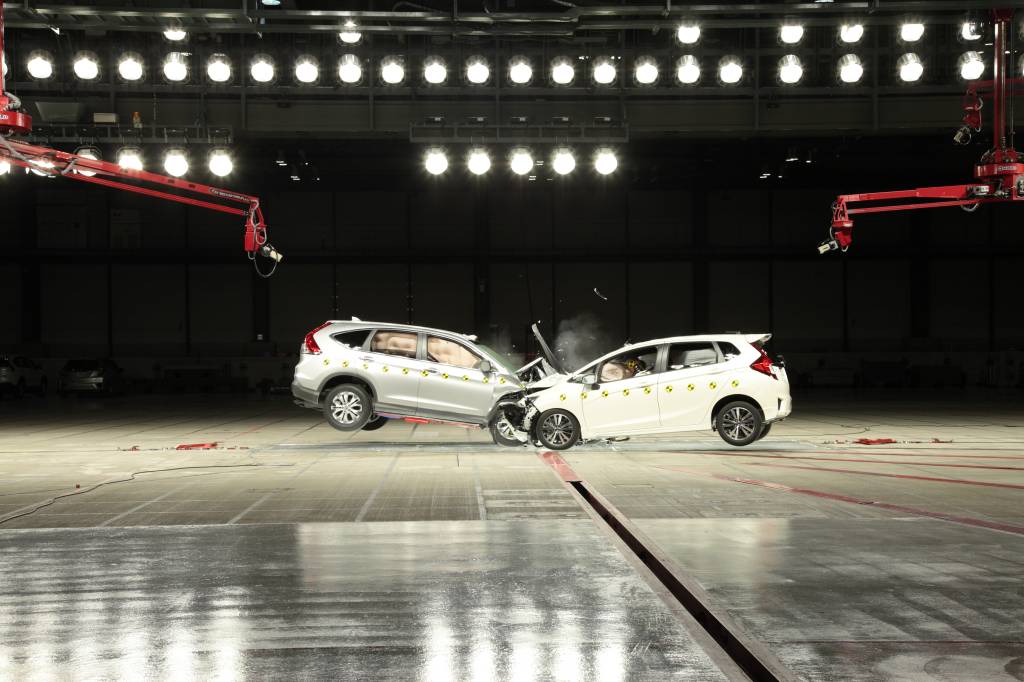
Crashing a CR-V into the Jazz shows that size doesn’t really matter when it comes to safety
All eyes are gazing at the centre of what looks like a large arena. There is absolute silence as everyone watches intently. Out comes a Honda CR-V and a Honda Jazz from either side of this huge facility, hurtling towards each other at a steady 50 km/hr. There is a loud boom as they crash into each other, head on. One can actually hear the glass shattering and metal crashing into metal. That’s all, it’s over in a flash and both cars are at rest. This is pretty much a daily routine at Honda’s state of the art indoor crash test facility in Tochigi, Japan and we were there to witness a crash test as it happens and it was some experience.
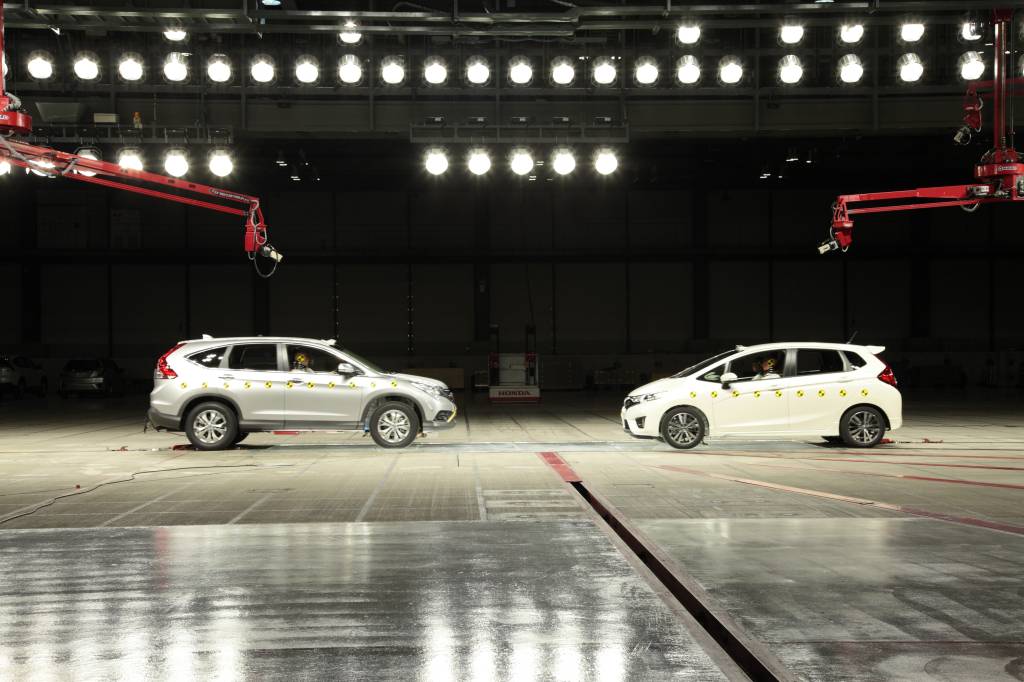
Honda’s philosophy is to provide quality mobility solutions which co-exist in a collision free society so that everyone can enjoy the freedom of mobility. With increased number of vehicles on the road, accidents are common and the company aims to reduce fatalities by researching and making cars which offer greater safety, not only to passengers but also to pedestrians. Accident analysis is done by studying the commonly occurring scenarios. This study is used to re-construct the accident in a controlled environment which is used to develop technologies which improve chances of survival in case of collisions. All this research and analysis has helped Honda develop the ACE Body Structure (Advanced Compatibility Engineering). This type of body design has high crash compatibility which in simpler terms means the engine bay is designed to absorb most of the force and gets crushed in stages on impact. The highly rigid structure ensures that the cabin undergoes minimum deformation, enhancing the chances of survival for the occupants.
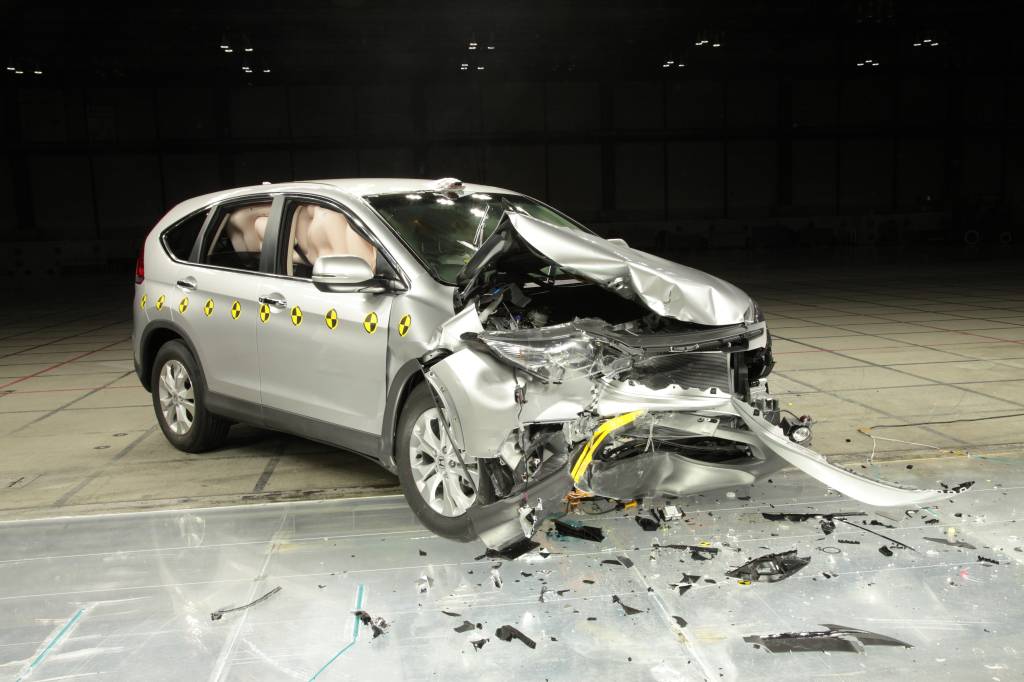
Honda’s crash test facility can recreate all kinds of weather and scenarios
Back to where it’s all done, this Crash Test facility in Tochigi is one of a kind. It was the world’s first omni-directional indoor crash test facility which allows recreation of all whether conditions and all possible crash scenarios. The head on crash tests can be done with either full overlap, 50% overlap or 10% overlap. There are slow-motion cameras which record as slow as 1000 frames per second from all angles. Honda uses approximately 1000 vehicles each year for these tests. The analysis is studied to improve the safety performance of the cars.
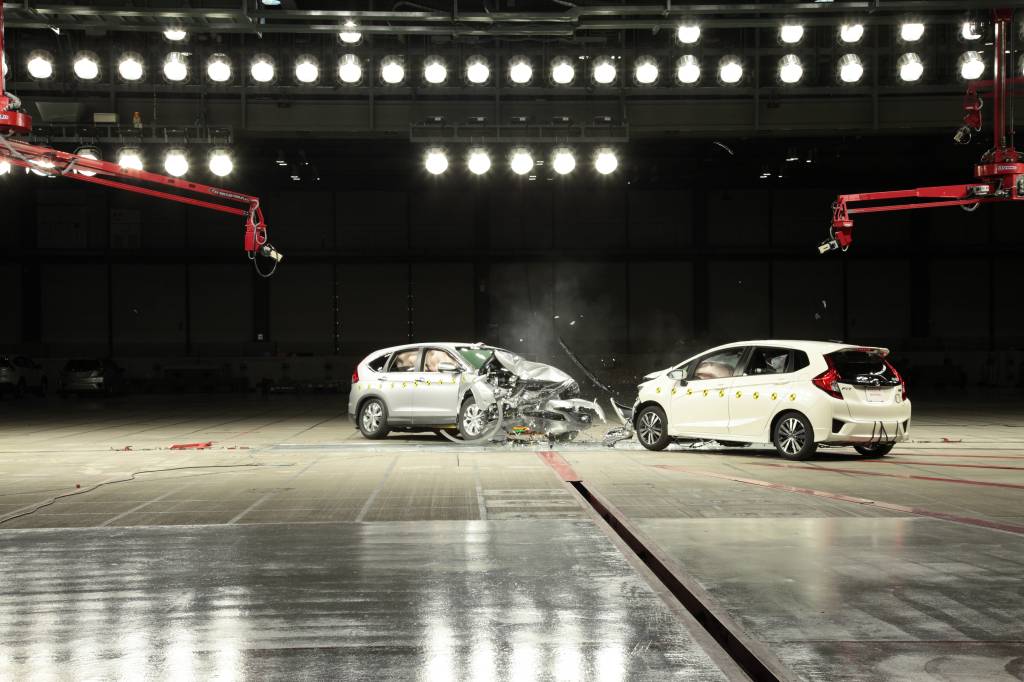
We experienced the crash between a CR-V and Jazz. Both cars crashed while doing 50 km/hr each, resulting in an impact velocity of 100 km/hr. Both these cars are production cars and are randomly picked out from a lot. The test was conducted at a 50% offset. The cars are on ignition mode (to avoid any chances of fire with fuel spillage) and are driven by a motorised units whose speed can be set by the master computer. A buzzer is heard and the test is underway with both cars aiming for each other. There is a big bang and its over faster than we anticipated.
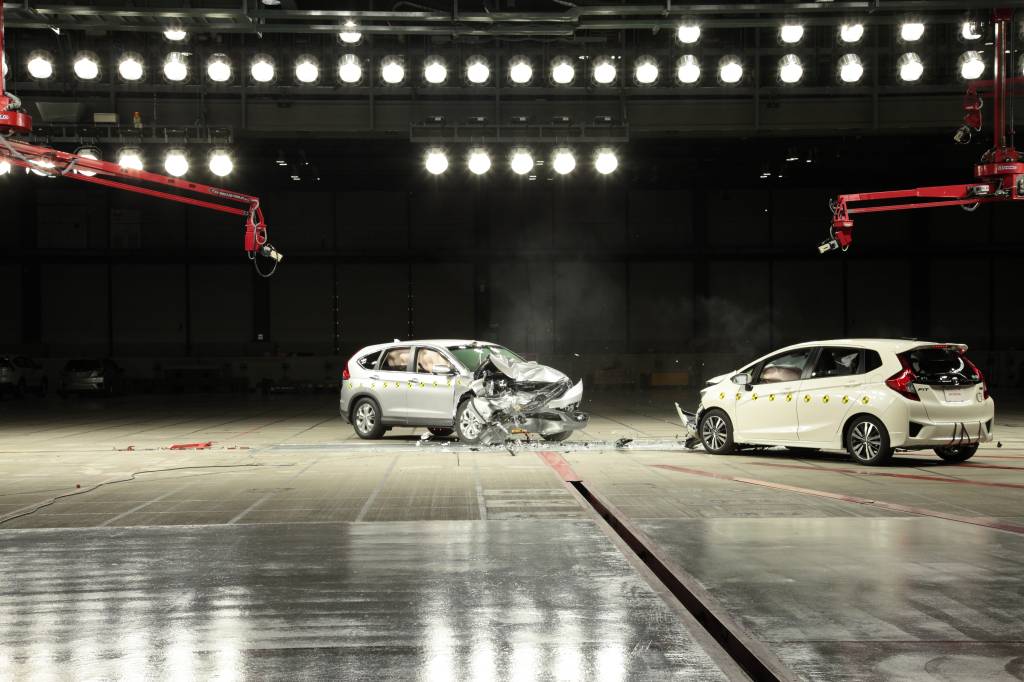
Seated in the cars are crash test dummies which replicate passengers. These dummies have sensors placed in most places such as the head, back, limbs, etc. These sensors record the force that the dummies were subjected to. These dummies vary in shape and size to mimic people of various height and gait. Even infant dummies are used in child seats on numerous occasions. Examining the site post the test, there is an evident burning smell accompanied by the smell of nitrogen gas, which inflates the airbags. There are broken headlamps and pieces of plastic (bumper) on the floor. The windshield glass is made in a way that it does not leave sharp shards of glass. It is designed to shatter into small pieces reducing the chances of injury.
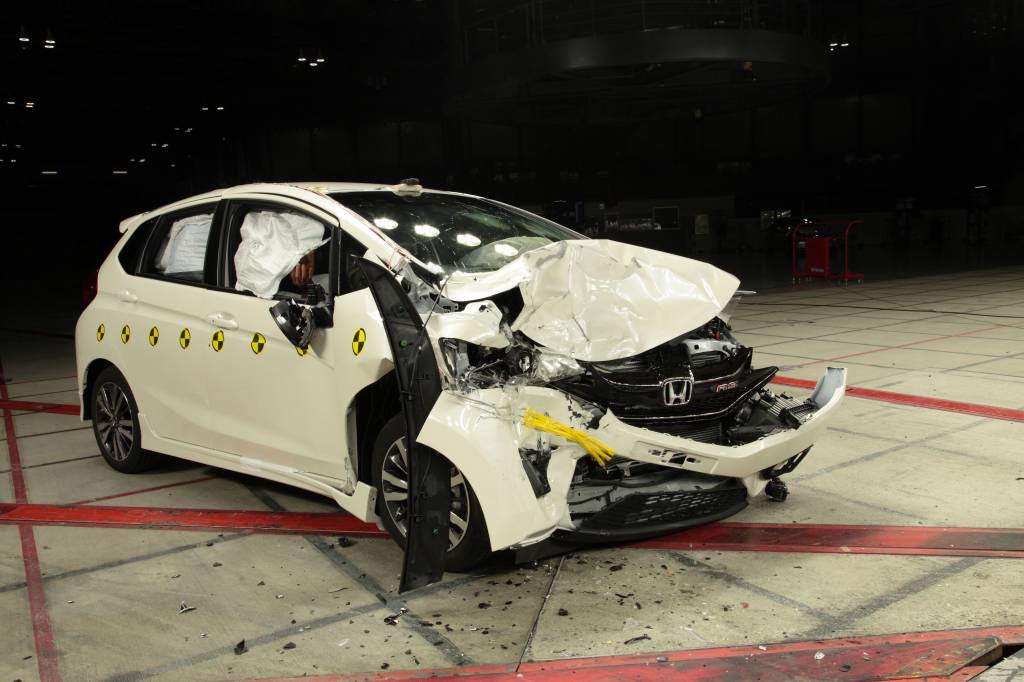
The slow-motion video of the crash shows the airbags deploying on impact and the engine compartment getting crushed. As a rule, the smaller car absorbs more energy and hence in theory, should be damaged to a greater extent. However, both the CR-V and Jazz have their engine compartments crushed but the cabin was largely intact and none of the dummies showed any serious injury on face value. It’s quite amazing to see that both the cars did brilliantly when it came to saving the lives of the occupants. This was just a test with dummies on board but these exercises help develop cars which are safer and help reduce fatalities in the real world.
Crash tests are conducted in simulated environments which can replicate real world conditions. These tests are then analysed and this analysis is used for further research and development to make cars which offer better safety to both occupants and pedestrians.
